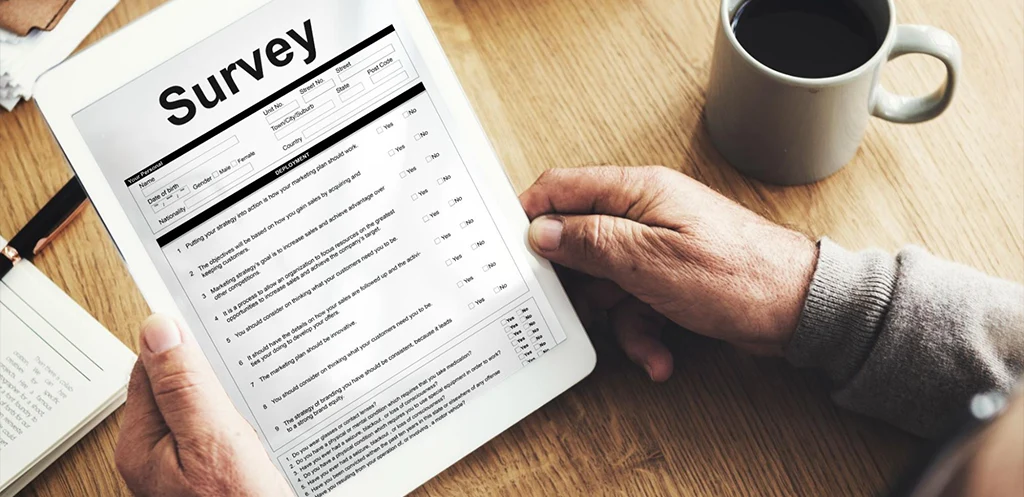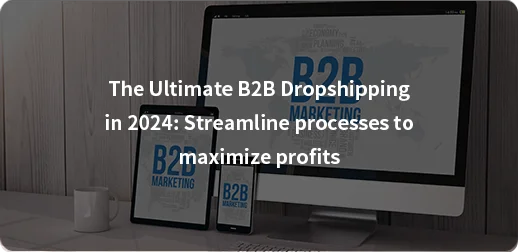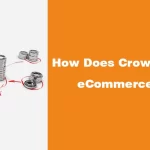Any business or service provider entering the market needs to know who their primary customers are. If the answer is ‘anyone and everyone,’ you’ve got a red flag right there.
Granted, some products and services are for a wider audience compared to others, for instance, soft drinks vs. athletic wear. Despite that reasoning, even the most commonly used products need a clear view of their target audience for several reasons.

Your primary audience helps envision how to market your products in a way that connects with the audience. Imagine seeing a jogger ad that only lists the features and benefits. Now compare this with a brand that links the shoe material with maximum comfort throughout jogging sessions.
You’re bound to go for the latter, right? For this reason, connecting with your target audience is crucial. But before that, you need to know who they are and how to find them. This guide will help you figure out those fundamentals.
What is the Target Audience?
Whether you’re already accustomed to the term target audience or have a gist of it from the introduction, let’s recap what it actually means before moving ahead.
The target audience is a group of people with common factors, such as age, gender, income, location, pain points, goals, and interests. These people are individuals who are most likely interested in your product or service compared to the general population.
Depending on your business, your target audience could be broad or narrow, as previously mentioned. Most people would be interested in buying a car, but not everyone has a Mercedes on their bucket list.
It’s important to understand that the target audience and target market are two different terminologies. While the target market defines a generic specification of your potential customers, a target audience is more specific and delves deeper into what your potential customers are like as individuals.
How to Find a Target Audience for Your Business?
Picking out your ideal audience helps businesses ensure that their marketing dollars are hitting the jackpot. And to do that, you need to find your potential customers. The following methods can guide you through the various platforms and strategies you can utilize to do that:
-
Competitors’ Audience Analysis
The best place to start with researching your primary audience is to look at a competitor selling the same product as yours. Uncovering your competitors’ audience insights will give you a solid ground to define your own.
To perform a competitor’s audience analysis, go over their social media profiles and website. A major advantage of analytics tools for social media and websites is that besides analyzing your business’s handles, you can also gather data from your competitors’ platforms.
Utilizing competitor analysis tools on social media platforms, identify the key demographics engaging with your competitors. Look through major trends, including age groups, location, interests, and content types.
For instance, if you work in the fitness apparel industry, search for competitors working in the same niche. Ideally, you’d also want to look at competitors offering services in the same region. Your competitor’s social media pages should show that they have a significant following of young adults interested in fitness and sustainable living.

-
Google Analytics
Google’s search engine had already made waves when it first took over conventional search engines like Yahoo. However, the real deal is its powerful Google Analytics tools for businesses and content creators alike.
Google Analytics allows businesses to gain invaluable insights into a website audience’s demographics, interests, metrics, and engagement. The tool provides a detailed overview through visual graphs, specifically in terms of the audience’s age, gender, location, and browsing habits.
With this information, businesses can utilize the tool to figure out what type of audience is visiting and engaging with their website. Simultaneously, brands can also find this information on their competitors’ websites.
Within Google Analytics, explore the ‘Audience’ section to pinpoint the age, gender, and geographical location of your website visitors.
Suppose you own an e-commerce store that sells tech gadgets. Through Google Analytics, you can find information on your or your competitors’ primary website audience, revealing that a significant portion of website traffic comes from tech-savvy individuals between 18-34 years old from urban areas.
-
Social Media Insights
Billions of people across the globe use some form of social media nowadays. A large percentage of these people explore and buy from brands they’re interested in on social media as well.
This is your cue to maximize the potential of social media analytics tools for creating the perfect target audience group for your business. These tools can reveal in-depth information on your potential customers using their demographics, interests, engagement patterns, and content preferences.
The best part is that almost every other social media platform currently has an exclusive in-built analytics feature for business profiles, including Facebook, Instagram, and Twitter. However, if you’re looking for a single platform that combines data from multiple social platforms, Hootsuite and Sprout Social are best suited for this purpose.
Imagine you run a small business offering handmade jewelry. Your Instagram insights show that a significant portion of your audience is young women between the ages of 17-25 living in cities with a monthly income of $500-800. Your insights will also depict what kind of content your audience is more interested in, e.g., Outfit of the Day (OOTD) posts with their jewelry.

-
Gather Surveys
Have you ever seen survey polls on social media published by companies or entrepreneurs and wondered what that’s all about?
These surveys are usually conducted to collect quantitative data, such as demographics, preferences, and behaviors. Through this information, businesses can understand their audience better using survey questions that reveal consumer habits, pain points, and interests.
While surveys are only a means of quantitative data, businesses can gather data from thousands of users using social media, survey platforms, and email surveys. This approach can pinpoint businesses to the right target audience and assist in making strategic data-driven decisions accordingly.
If you run a beauty product business, conduct a survey on survey platforms or social media polls for quantitative data regarding preferred skincare routine. The responses might reveal that a significant portion of your audience is interested in cruelty-free and organic products.
-
Conduct Interviews
For a more comprehensive and personalized method of identifying your target audience, businesses can reap the benefits of conducting interviews.
Interviews enable a more direct, detailed approach to understanding your target audience, their goals, motivations, preferences, pain points, and behaviors.
As a business, you can either opt for one-on-one or focus group interviews. Prepare yourself to steer a more in-depth conversation. These conversations also enable the interviewer to study the audience’s non-verbal cues.
For instance, a poll on where you get your morning coffee: make it yourself, Starbucks, Costa Coffee, local coffee shop, or other. On the other hand, interview questions can ask what factors influence the individual/s to go for their preferred coffee.
Opt for personalized interviews to delve into detailed insights. Suppose you’re in the travel industry. Conduct one-on-one interviews or focus groups and inquire about preferred travel experiences and motivations.
While you might be offering general discounts and travel packages, in a one-on-one interview, a participant expresses that they prefer adventurous vacations alongside cultural experiences.
How to Conduct a Target Audience Analysis?
Tons of studies have found that not having a clear understanding of your target audience can result in a complete waste of your marketing budget. After all, you’re missing the bullseye trying to pitch to the wrong audience.
Once you have a basic understanding of where to find your target audience, it’s time to gather data and get to know them better. Before you start implementing the top advertising tips for your brand, knowing your target audience inside out is what will help you understand their pain points, objectives, and reasoning. Let’s get started!

1.Know Your Objectives
If this is the first time your company is conducting a target audience analysis, you don’t necessarily need to recognize your objectives. At this point, you just need to analyze to identify your company’s overall target audience.
On the contrary, for established businesses, this step is integral. Such businesses already have an existing customer base, and your next target audience analysis should align with your upcoming campaign’s objective.
Are you looking for new customers or retargeting those that previously purchased from you? Your target audience and the subsequent analysis will differ accordingly.
2.Define Your Audience
The next step is to gather and organize the study you previously collected when trying to find your target audience. For this step, you can also go back to conducting surveys and interviews or analyzing your competitors’ audience.
Start by outlining the demographics. What is the age bracket of your audience, where are they located, what’s their highest education degree, and what’s their average household income?
Next, you need to consider their socio-graphics. Understand their values, culture, and lifestyle. What are their aspirations and challenges?
While a broader outlook helps, it’s important to define your audience more precisely at this stage. As a result, you’ll be able to understand their behaviors better, and what would make them buy your product or service.
3.Determine Behaviors & Barriers
Your target audience’s preferences and habits allow insights into their interactions. In other words, why they do what they do.
If your target audience is interacting with your competitor’s content and not yours, they may prefer that content type better. Or, it could be that your posting frequency or time doesn’t match with when your audience uses social media platforms.
Maybe your target audience is the type that seeks discounts, instead of buying impulsively as soon as something starts trending.
Once you have a better understanding of what motivates your target audience, you need to know their challenges.
Would they abandon a cart if the site doesn’t offer online payments? Do they opt out of buying from a brand because they don’t find any reviews online? If your e-commerce store is lacking customer reviews, utilize the best practices to encourage your customers to leave one.
Figuring out the obstacles that your target audience experiences helps brands mitigate those barriers, which is why it’s a crucial step for target audience analysis. Without this information, you’ll be missing out on a lot of key factors for your marketing strategy.

4.Create Target Audience Personas
Your target audience never looks alike. Most businesses have different types of target audiences. So, what do you do with this information?
The fourth step in conducting a target audience analysis is to visualize your ideal customers. Despite having thousands of customers, your ideal customers should fit into 1-4 profiles based on common characteristics.
To create personas, you need to group the demographics, socio-graphics, and psychographics previously collected in the target audience analysis, otherwise called audience segmentation. Next, create 1-4 profiles based on different types of people who are most likely to buy your product or service.
Imagine your company sells eco-friendly water bottles. Your target audience personas could be the following types of people:
- Eco-Conscious Emily:
Demographics: Female, aged 25-35, urban dweller.
Psychographics: Passionate about sustainability, practices a zero-waste lifestyle, actively engages in environmental causes.
Goals: Reduce personal carbon footprint, and make environmentally responsible choices.
Challenges: Finding eco-friendly alternatives for everyday products, and influencing peers to adopt sustainable practices.
Preferred Channels: Active on social media platforms, follows eco-conscious influencers and blogs.
- Fitness-Focused Felix:
Demographics: Male, aged 18-30, fitness enthusiast.
Psychographics: Values health and wellness, and engages in regular physical activities.
Goals: Stay hydrated during workouts, and reduce reliance on single-use plastics.
Challenges: Finding durable, reusable water bottles suitable for on-the-go activities.
Preferred Channels: Active on fitness apps, follows health and wellness influencers.
- Family-Oriented Olivia:
Demographics: Female, aged 30-45, mother of two.
Psychographics: Concerned about the environment’s impact on the next generation, prioritizes family health.
Goals: Provide children with eco-friendly products, and instill sustainable habits at home.
Challenges: Balancing convenience with sustainability for the family.
Preferred Channels: Engages with parenting blogs, and seeks product recommendations on social media.
- Corporate Sustainability Carl:
Demographics: Male, aged 35-50, corporate professional.
Psychographics: Works for a company with a strong sustainability focus, and seeks eco-friendly solutions in daily life.
Goals: Align personal choices with workplace values, and reduce plastic waste.
Challenges: Finding eco-friendly products suitable for the corporate environment.
Preferred Channels: Actively involved in corporate sustainability forums, and follows green living blogs.
Since we’re on the topic of going green, if your brand is trying to reach eco-conscious individuals or committing to a reduced carbon footprint, Globallyfulfill’s pack green services should be your go-to for environmentally-friendly product packaging.
Similarly, draft personas for your company, depending on the product or service you sell. Make sure you categorize common characteristics. You don’t want too many customer personas, stick to a number between 1-4. Additionally, you can use templates available on the internet for free.
5.Utilize Customer Feedback
There are times when you believe that your target audience analysis is pitch-perfect up till the point you’re at. You’ve figured out everything, from A to Z, concerning your target audience and are on your way to creating a marketing campaign.
However, more often than not, that’s not how it goes. You may perceive certain things about your audience, but the reality could be different. Therefore, it’s advisable to tune into your social listening skills.

Conduct further polls and surveys, if required and doable. If not, you can see what your or your competitors’ audiences are saying on social media.
What do they discuss on these platforms? Have they used a similar product? What was their experience? What are some challenges your competitors haven’t been able to resolve for your target audience?
Alternatively, you can also ask for direct feedback from your clients. Remember, it’s easier to retain customers with a strategic plan than to attract new customers.
Ultimately, this approach will help you improve your target audience analysis over time.
6.Monitor Your Competitors
Never let your competitors out of sight or mind! You might’ve perfected your target audience analysis to the tee, but it’s best to stay on top of your competitors’ game.
Keeping a routine check of your competitors’ audience through website and social media analysis can offer useful insights into their target audience reach. Furthermore, evaluate their most effective social media strategies and apply them to your content game later on.
Is it similar to yours or do they have a broader reach? Are their engagement levels better? How does their content differ from yours? What kind of audience are they focusing more on?
These questions will help you review your existing target audience analysis and marketing strategies, and come up with better ideas for future analysis.
Final Verdict
A target audience analysis is a company’s compass in the realm of marketing.
With thousands of competing sharks in the market, a brand needs to stand out with its marketing strategy by connecting with its audience. And that’s possible only when you leave no stone unturned with respect to knowing your target audience.
From knowing where to find your audience to refining your analysis, every step of the process is essential in a target audience analysis. So make sure to follow the steps outlined in this guide, and you’re good to go!
















